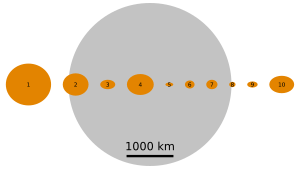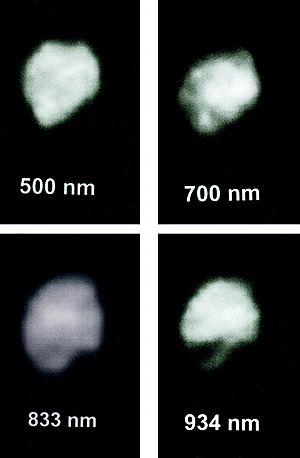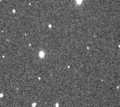3 Juno facts for kids
3 Juno is a large space rock, called an asteroid, that orbits the Sun in the main asteroid belt. It was found by an astronomer named Karl Ludwig Harding on September 1, 1804. Juno was the third asteroid ever discovered in our Solar System! It's named after Juno, a powerful Roman goddess who was known as the queen of all gods.

Juno is a special kind of asteroid called an S-type asteroid. This means it's mostly made of stony materials, like rock. Scientists believe that Juno makes up about 1% of the total mass of all the asteroids in the main asteroid belt. That's a lot for just one space rock!
Contents
Discovering Juno
Juno was discovered by Karl Ludwig Harding, a German astronomer. He found it on September 1, 1804. At the time, finding new objects in space was very exciting! Before Juno, only two other asteroids had been found: 1 Ceres and 2 Pallas. This made Juno the third asteroid ever identified by humans.
What is an Asteroid?
Asteroids are small, rocky objects that orbit the Sun. They are sometimes called "minor planets." Most asteroids, like Juno, live in a special area between Mars and Jupiter called the asteroid belt. This belt is like a cosmic highway filled with millions of asteroids, from tiny dust particles to giant rocks hundreds of miles wide.
Juno's Special Features
Juno is one of the larger asteroids in the main belt. It's not perfectly round like a planet; it has an irregular shape, a bit like a lumpy potato.
Size and Type
Juno is classified as an S-type asteroid. The "S" stands for "stony," meaning it's made up of rocky materials, including silicates and some metals like iron and nickel. Scientists study these types of asteroids to learn more about how our solar system formed. Juno is about 234 kilometers (145 miles) across on average. That's roughly the distance from New York City to Philadelphia!
How Bright is Juno?
Juno is one of the brighter asteroids we can see from Earth. Because it's relatively bright and close, it was one of the first asteroids to be discovered. Its brightness changes a bit as it rotates, which helps scientists figure out its shape and how fast it spins.
Juno's Journey Around the Sun
Like all asteroids, Juno travels around the Sun in its own path, called an orbit.
Juno's Orbit
Juno's orbit is a bit more stretched out, or "elliptical," than the orbits of many other asteroids. This means its distance from the Sun changes quite a bit as it goes around. It takes Juno about 4.36 Earth years to complete one full trip around the Sun. Its orbit is also slightly tilted compared to the path of Earth and other planets.
Observing Juno
Because Juno is one of the larger and brighter asteroids, astronomers have been able to study it for a long time. They use powerful telescopes to watch its movements and learn more about its surface. Sometimes, Juno passes in front of a star, briefly blocking its light. This event, called an "occultation," helps scientists measure Juno's exact size and shape very accurately.
Images for kids
See also
 In Spanish: (3) Juno para niños
In Spanish: (3) Juno para niños







